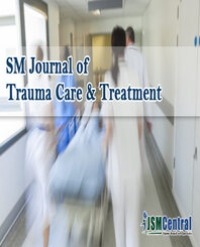
Literature on strength-based intervention in mitigating internalized and externalized violent activity of Black male teenagers exposed to racial trauma
Background: Black male violence is a public health crisis related to childhood complex trauma. Racial trauma operates as complex trauma. Strengthbased intervention (SBI) is modern to resilience science, where the injured’s culture, identity, and environment frame intervention base. Retrospective designs demonstrate promise of SBI in interrupting violent internalizations and externalizations of Black male youth reporting racial trauma. Review objective was to identify and review evidence-based prospective and clinical trials which assess resilience to violent activity of Black male teenagers exposed to racial trauma using SBI.
Methods: Two investigators completed independent primary reviews of eight databases according to PRISMA guidelines to synthesize literature to undergo full-text secondary review for inclusion criteria screening. A standardized search protocol was established.
Results: 553 studies underwent primary review screening. 0 studies met complete inclusion criteria. However, extrapolating insight suggests ethnic identity development and Black manhood vulnerability awareness in the teenage period of Black males as critical interrupters in the evolution of Black male violent activity in environments of racial trauma. Strength-based interventions may have promise targeting this factor.
Conclusion: Although literature advocates for strength-based intervention to mitigate violence amongst Black male youth exposed to racial trauma, there is scarcity of advanced studies analyzing this relationship to best inform health and policy’s pursuit in addressing the prevailing interaction of Black male violence and racially traumatized environments. Scholarly contributions assessing SBIs on Black male adolescents is needed to contribute data guiding best practices promoting resilience to violent activity of Black males in underserved environments.
Limitations: This review is limited by databases made available from affiliate library of primary investigator, search protocol which assumes generalizability, and over/under sight of aim capture by bias or imprecise methodology.
Funding: Funding of this review is by the Louisiana Health New Orleans Department of Psychiatry
Michael Okoronkwo1*, Russell J Ledet2#, Allison Smith1#, Ariel Harrison3 , Stacey Rhodes1 , Keyanna Varnado4 , Oluremi Omotayo5 , Micheala Banks1 , Irene Obika6 , Linda Bett6 , Josh Deblieux1 , Brian Washington7 , Pierre Detiege1 , Peggy Honore7 , Rhan Bailey1#
